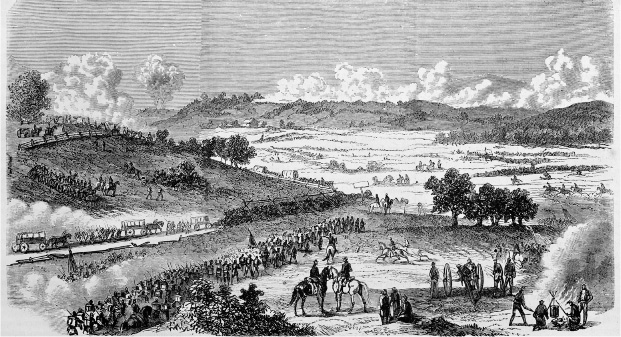Midpoint of the War: May to July 1863Small Towns in a Big War |
When did the action begin to move toward Vicksburg? |
During the winter of 1863, General Ulysses S. Grant directed the Army of Tennessee in a variety of operations, all directed toward the same goal. It was obvious to Grant, as well as to his immediate superior General Henry Halleck, that Vicksburg was the key to the Trans-Mississippi West: if that fortified town fell, the Union would enjoy unimpeded access to, as well as control of, the length of the great river. How to proceed was a mighty question, though.
Vicksburg enjoyed superb natural defenses. The fortified city sat atop a bluff that was 250 feet above the Mississippi water level and roughly 350 feet above sea level. Vicksburg was situated at a severe, almost 180-degree turn in the Mississippi, giving the Confederate garrison ample opportunity to employ its guns against any approaching flotilla. In 1862, the Union Navy had proven that it could, on occasion, pass by the Confederate batteries, but it had not solved the riddle of how to silence the guns.

An 1863 illustration from Journal Universel in Paris shows a view of the Gettysburg battlefield.
